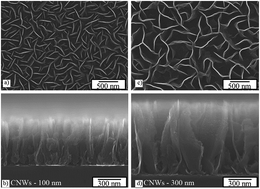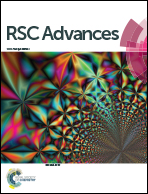High sensitivity of a carbon nanowall-based sensor for detection of organic vapours
Abstract
The high sensitivity in response, selectivity and reversibility was achieved on a carbon nanowall-based sensor for the vapor detection of volatile organic compounds, which were tested by an electrical resistance method during adsorption and desorption cycles. The maze-like structure of two different carbon nanowalls with wall-to-wall distances of 100 nm and 300 nm were prepared on a silicone substrate by a plasma-enhanced chemical vapor deposition system while varying processing parameters. Four organic vapors: iso-pentane; diethyl ether; acetone; and methanol; were selected in order to evaluate the relationship between the change in resistance, molecular weight of the adsorbent and the polarity. The results show that the carbon nanowalls with average wall distance 100 nm exhibit substantially enhanced electrical response to all volatile organic compound vapors used in comparison with the nanowalls with 300 nm wall distance as well as entangled multiwall carbon nanotube networks.


 Please wait while we load your content...
Please wait while we load your content...